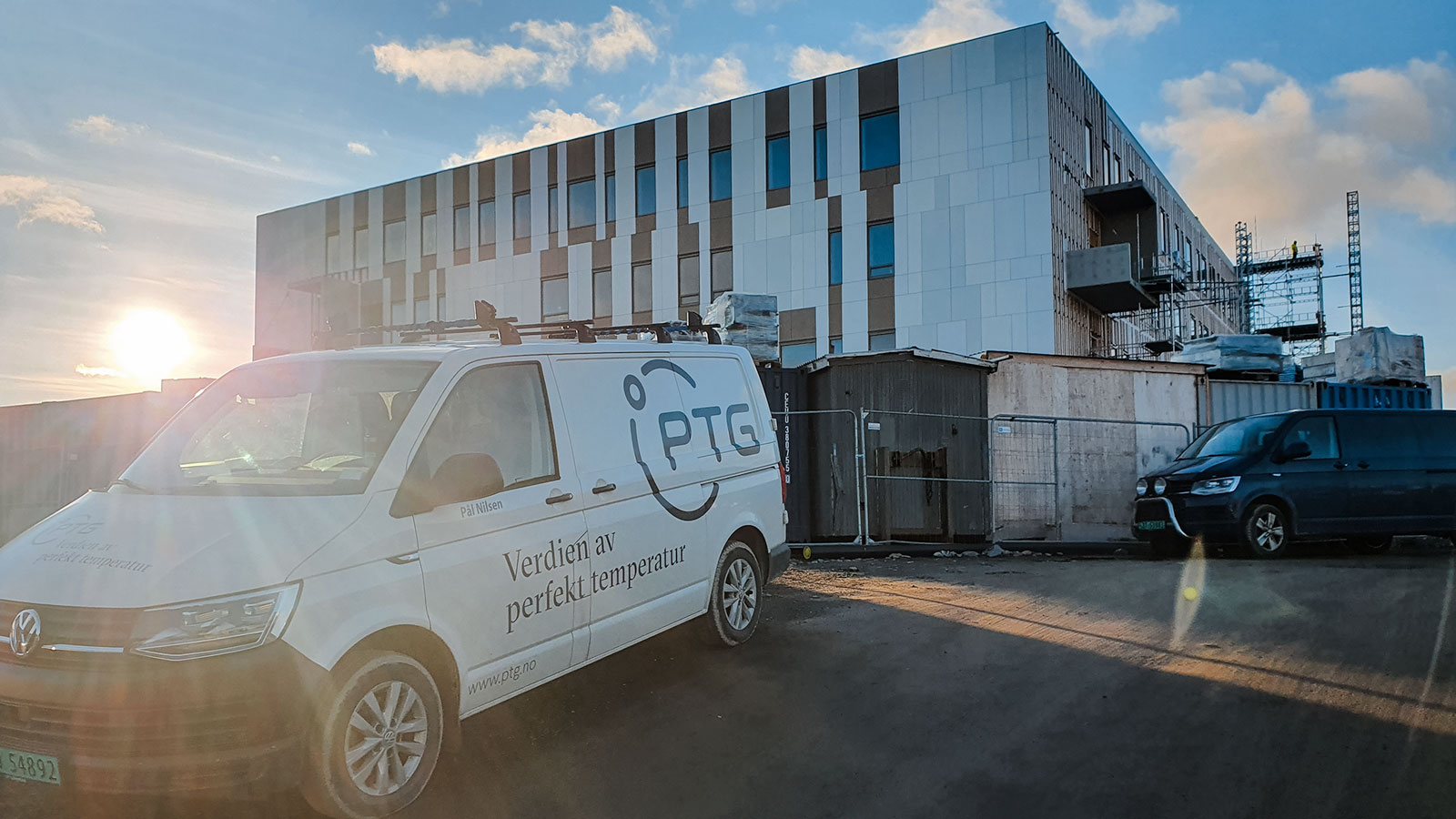“It’s been a fantastic collaboration both in PTG and with our Swedish sister company SLS,” reports Martin Schjølberg, the PTG group’s vice president of sales and marketing for the commercial and climate market.
Seawater, natural refrigerants and broad climate expertise. When the new Finnmark Hospital in Hammerfest is installing it’s energy systems, PTG puts its knowledge and technology into use to reduce both greenhouse gas (GHG) emissions and energy consumption.
With its head office in the north Norwegian city of Tromsø, PTG – Perfect Temperature Group – comprises a nationwide and increasingly international team of experts in refrigeration technology. It supports both commercial and public-sector enterprises in switching to more environment-friendly solutions, and is now in full swing in Hammerfest.
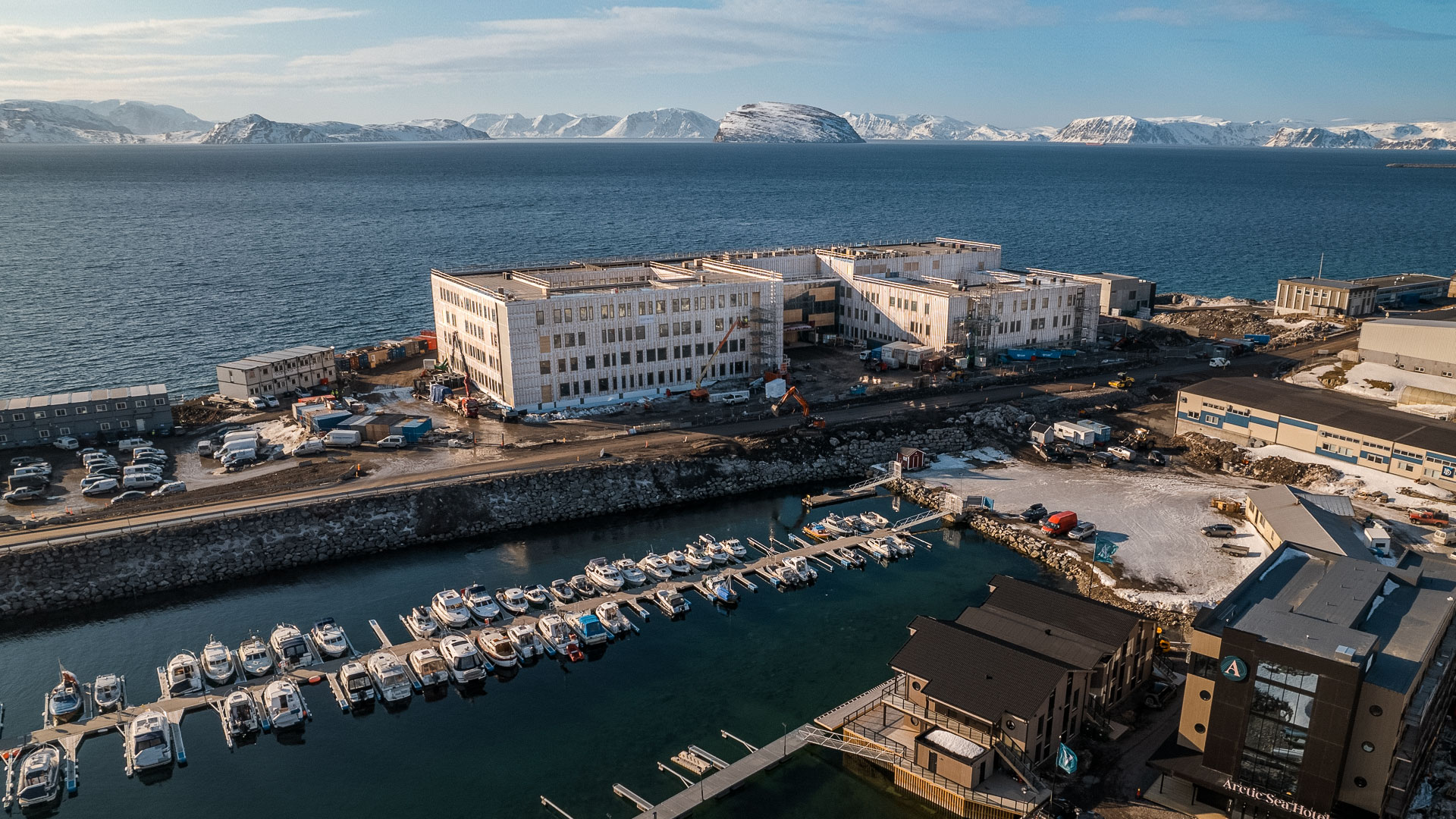
When the new Finnmark Hospital in Hammerfest becomes operational in January 2025, heating and cooling for a building of more than 33 000 square metres will come primarily from seawater and natural refrigerants. PTG and its Swedish sister company SLS are responsible for delivering environment-friendly technology. Photo: Polarnatt.
Energy from sea
The environment is taken precisely into account in the solutions chosen throughout the new hospital in Hammerfest. When it is ready to open in January 2025, heating and cooling for a building covering more than 33 000 square metres will derive primarily from seawater and natural refrigerants.
“Selecting solutions which utilise natural gases is enshrined in the hospital’s functional specification for both financial and environmental reasons,” explains Richard Olaussen, project manager at Consto and responsible to the client for the hospital’s energy centre.
The Hammerfest facility is due to meet about two-thirds of its cooling and heating requirements from seawater at a temperature of 6–7°C, with the aid of two large ammonia pumps and heat exchangers.
“This is a very effective method, which significantly reduces the hospital’s energy consumption,” reports Olaussen.
Halving power bills
According to an article on the nrk.no website from the Norwegian Broadcasting Corporation (NRK), project manager Morten Grunnhov at the Norwegian Hospital Construction Agency believes the modern heat pump offers many advantages.
“We’re getting all our energy for a fraction of the price we’d have to pay if we bought it direct from the electricity grid,” he says.
The article notes that power bills are expected to be reduced by around NOK 3 million per year.
“With the plant we’ve got here, we’re effectively paying for just over half the energy we use,” Grunnhov reports.
Although the modern energy centre costs far more than traditional solutions, the construction agency believes it will yield big savings over time.
“We’re paying a little extra now to secure cheaper energy during the operating phase,” Grunnhov observes. “And that lasts a lot longer that the construction project.”
No negative environmental effects
Martin Corneliussen is PTG’s project manager responsible for the technology involved and installation of the indoor climate control system at the Hammerfest hospital.
“In addition to a high level of energy efficiency, ammonia is a very environment-friendly refrigeration medium,” he says.
Its climate effect is demonstrated through its global warming (GWP) and ozone depletion (ODP) potentials. Natural refrigerants such as ammonia and CO2 have low or no documented negative effects on the environment.
“Ammonia has a zero value for both GWP and ODP,” Corneliussen explains. “By comparison, leaks of synthetic refrigerants, such as hydrofluorocarbons (HFCs), will be very negative.”
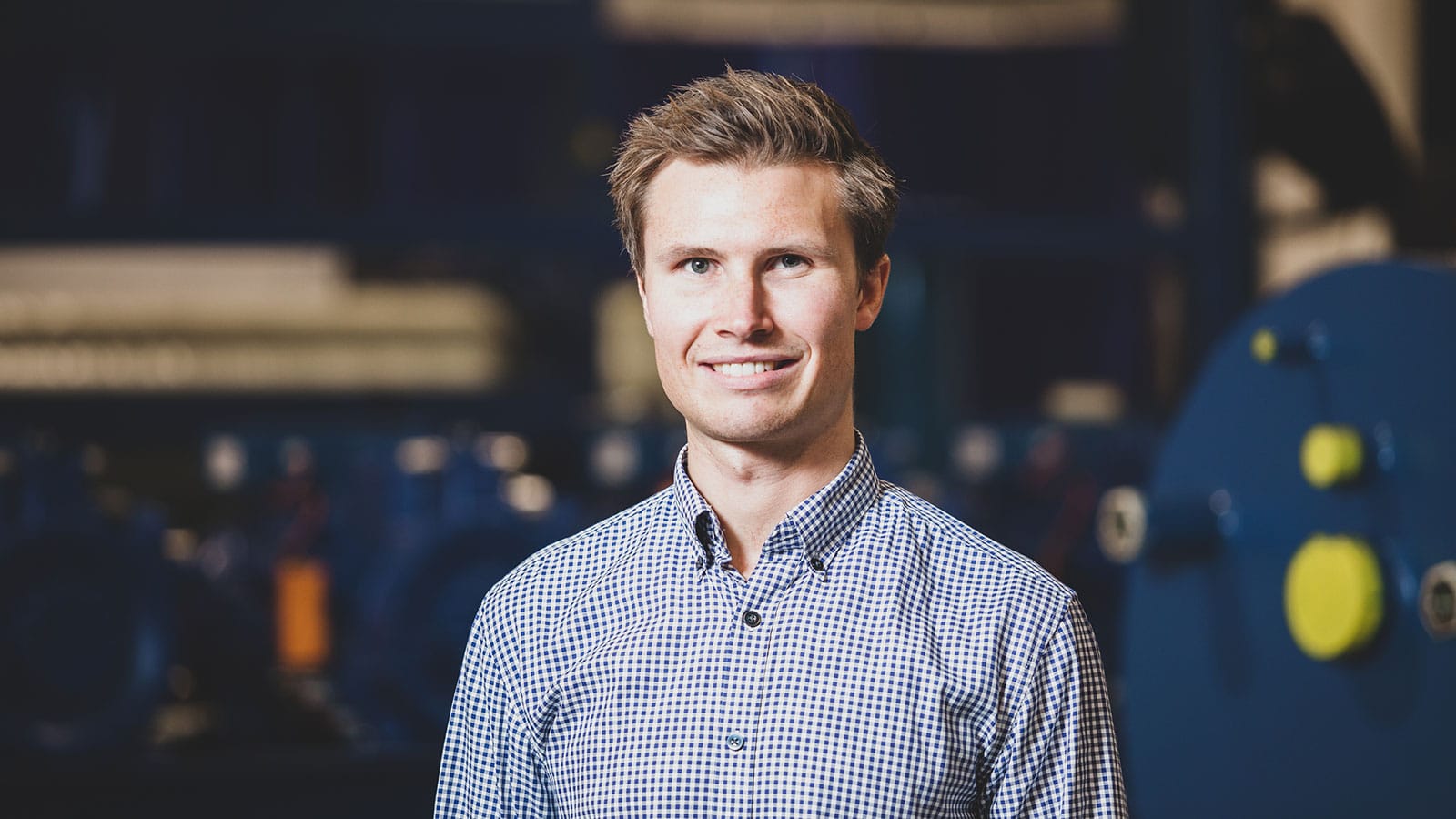
Martin Corneliussen is responsible for PTG’s delivery of environment-friendly climate technology to the new Finnmark Hospital in Hammerfest. Photo: David González.
Heart of the hospital
He describes the energy centre as the very heart of the technical arrangements in the new hospital.
“Demand-controlled cooling and heating are pumped out to the building’s many technical installations through a big network of piping systems. At the same time, waste heat is recovered and conducted back to the system, ensuring that no energy is lost.”
In parallel, Corneliussen’s team is installing a number of refrigeration and freezer equipment for the 11 refrigerator and freezer rooms being provided for such functions as catering, storage and laboratories.
CO2 has been selected as the refrigerant for these rooms, and Corneliussen is pleased that a natural medium is also chosen here.
“In addition to being environment-friendly, natural media have thermodynamic properties which contribute to high efficiency factors – in other words, larger amounts of energy are obtained per unit of energy supplied. This combination makes both environmental impact and energy consumption low.”
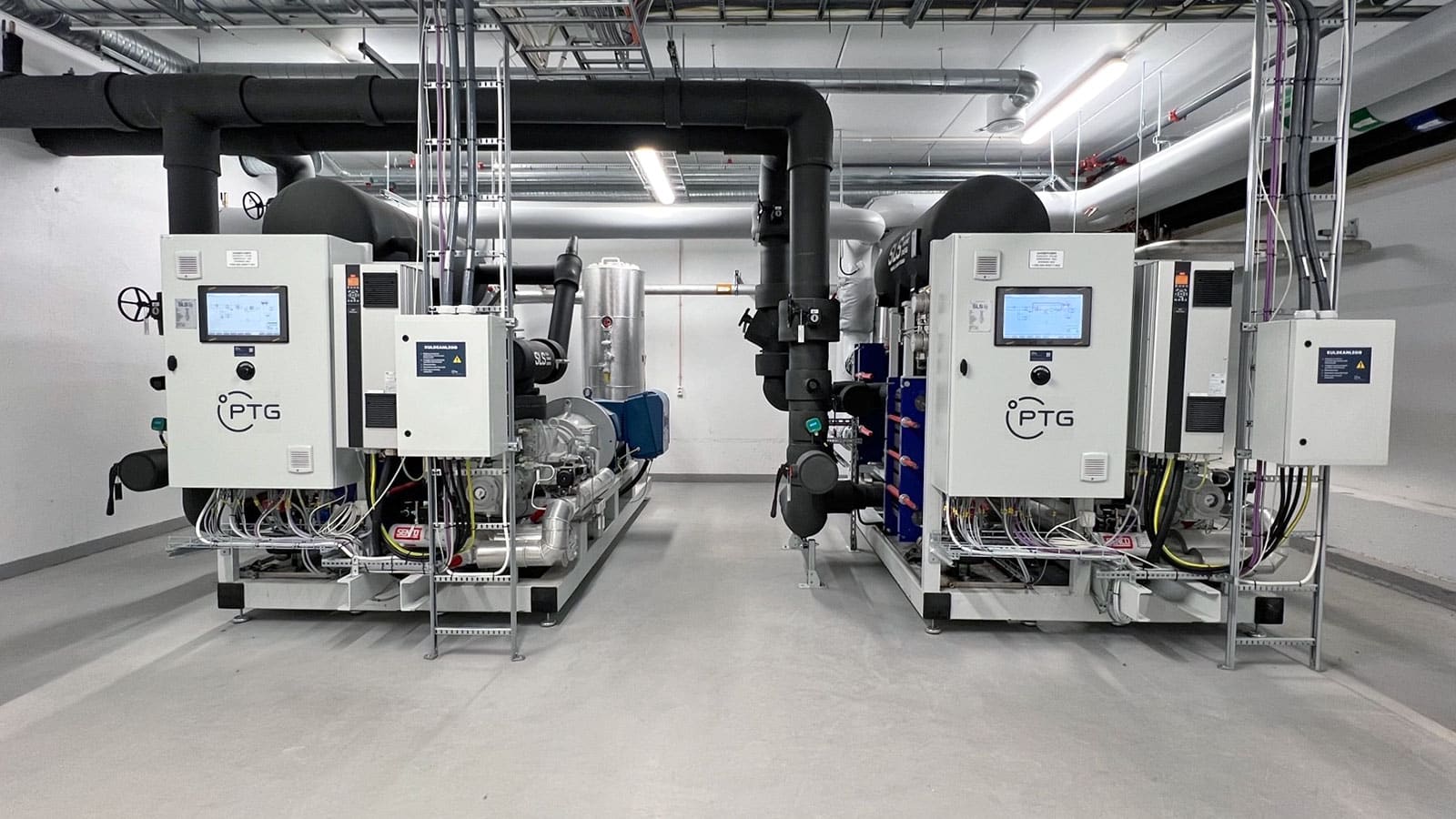
Cutting CO2 emissions
According to NRK, the Northern Norway Regional Health Authority –operator of the hospital – will reduce its own CO2 emissions by 40 per cent. The broadcaster takes the energy centre as a sign that the authority is on its way into the green transition.
“We’ve worked on this project for almost 10 months,” reports Martin Schjølberg, the PTG group’s vice president of sales and marketing for the commercial and climate market. “It’s been a fantastic collaboration both in PTG and with our Swedish sister company SLS.”
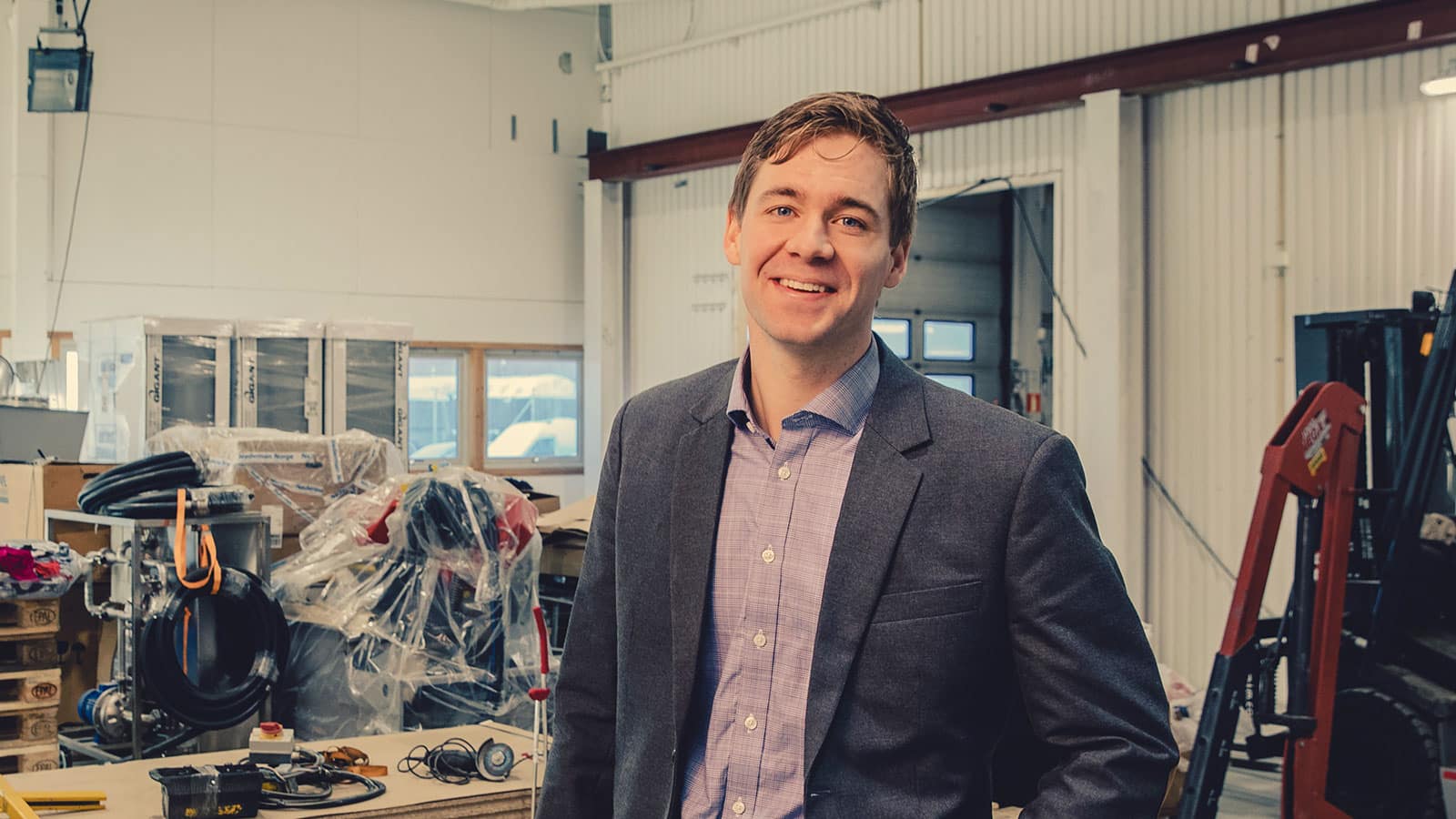
“Our goal is to be the best at providing advice, installation and service for forward-looking and sustainable climate and refrigeration solutions,” says Martin Schjølberg, vice president of sales and marketing for the commercial and climate market at the PTG group. Photo: Photographer Marius Fiskum.
Stricter environmental standards
Building expertise with natural refrigerants is an expressed goal for PTG, says Schjølberg. He notes that the EU’s F gas regulation aims to reduce the use and emission of greenhouse gas by two-thirds in 2030.
“We will see ever stricter demands related to this issue in coming years,” Schjølberg says. “Supporting our customers in switching to environment-friendly alternatives is therefore important for us.
“Our goal is to be the best at providing advice, installation and service for forward-looking and sustainable climate and refrigeration solutions. We’re pleased that we can now also contribute to our health institutions and the new hospital in Hammerfest.”
See the NRK report on the hospital project (in Norwegian only)
